
William Blake Painting Reproductions 1 of 1
1757-1827
British Painter
William Blake (1757-1827) was an English painter, poet, and printmaker who is now considered one of the greatest figures of British Romanticism. His works are renowned for their visionary and mystical qualities, exploring themes of spirituality, imagination, and the human condition.
William Blake was born on November 28, 1757, in London, England. He was the third of seven children in a middle-class family. From a young age, Blake displayed a keen interest in art and literature, and his parents encouraged his creative pursuits. He was largely educated at home by his mother, who taught him to read and write. Blake's passion for art led him to attend drawing classes at the age of ten.
At the age of 14, Blake was apprenticed to an engraver, James Basire, where he learned the technical skills of engraving and developed a love for Gothic art. After completing his apprenticeship, Blake enrolled at the Royal Academy of Arts in 1779, where he studied painting and drawing. In the late 1780s, Blake began to experiment with a new technique called "illuminated printing," in which he combined his original writings and artwork, etched them onto copper plates, and hand-colored each print. His most famous illuminated works include "Songs of Innocence" (1789) and its companion volume "Songs of Experience" (1794), which contain some of his best-known poems, such as "The Lamb" and "The Tyger." Blake's artwork often incorporated his poetry, and his distinctive style combined intricate, detailed figures with vibrant colors and rich symbolism. Despite his innovative approach, Blake struggled to gain recognition and financial success during his lifetime, and he relied on commissions and the support of a small group of patrons to sustain his work.
Blake's poetry and writings were deeply influenced by his spiritual and mystical beliefs. He rejected the rigid doctrines of organized religion and embraced a personal, experiential spirituality. His writings explored themes of divine inspiration, the imagination, the nature of good and evil, and the importance of free thought and individuality. Blake's most extensive poetic work is "Jerusalem: The Emanation of the Giant Albion," an epic allegorical poem that he worked on throughout his life but never completed. He believed that his artistic and poetic visions were divinely inspired and that he communicated with spiritual beings, which he referred to as "the eternal states."
In his later years, Blake's reputation as an artist and poet began to grow, and he found a small circle of admirers and supporters. He continued to create art and write prolifically until his death. One of his final projects was illustrating Dante's "Divine Comedy." William Blake passed away on August 12, 1827, at the age of 69. Following his death, his works gained increasing recognition, and his unique style and visionary themes greatly influenced subsequent generations of artists and writers. Today, William Blake is celebrated as a visionary and a forerunner of the Romantic and Symbolist movements. His innovative approach to art and poetry continues to inspire and captivate audiences, and his works are exhibited in major museums and galleries around the world.
William Blake was born on November 28, 1757, in London, England. He was the third of seven children in a middle-class family. From a young age, Blake displayed a keen interest in art and literature, and his parents encouraged his creative pursuits. He was largely educated at home by his mother, who taught him to read and write. Blake's passion for art led him to attend drawing classes at the age of ten.
At the age of 14, Blake was apprenticed to an engraver, James Basire, where he learned the technical skills of engraving and developed a love for Gothic art. After completing his apprenticeship, Blake enrolled at the Royal Academy of Arts in 1779, where he studied painting and drawing. In the late 1780s, Blake began to experiment with a new technique called "illuminated printing," in which he combined his original writings and artwork, etched them onto copper plates, and hand-colored each print. His most famous illuminated works include "Songs of Innocence" (1789) and its companion volume "Songs of Experience" (1794), which contain some of his best-known poems, such as "The Lamb" and "The Tyger." Blake's artwork often incorporated his poetry, and his distinctive style combined intricate, detailed figures with vibrant colors and rich symbolism. Despite his innovative approach, Blake struggled to gain recognition and financial success during his lifetime, and he relied on commissions and the support of a small group of patrons to sustain his work.
Blake's poetry and writings were deeply influenced by his spiritual and mystical beliefs. He rejected the rigid doctrines of organized religion and embraced a personal, experiential spirituality. His writings explored themes of divine inspiration, the imagination, the nature of good and evil, and the importance of free thought and individuality. Blake's most extensive poetic work is "Jerusalem: The Emanation of the Giant Albion," an epic allegorical poem that he worked on throughout his life but never completed. He believed that his artistic and poetic visions were divinely inspired and that he communicated with spiritual beings, which he referred to as "the eternal states."
In his later years, Blake's reputation as an artist and poet began to grow, and he found a small circle of admirers and supporters. He continued to create art and write prolifically until his death. One of his final projects was illustrating Dante's "Divine Comedy." William Blake passed away on August 12, 1827, at the age of 69. Following his death, his works gained increasing recognition, and his unique style and visionary themes greatly influenced subsequent generations of artists and writers. Today, William Blake is celebrated as a visionary and a forerunner of the Romantic and Symbolist movements. His innovative approach to art and poetry continues to inspire and captivate audiences, and his works are exhibited in major museums and galleries around the world.
7 William Blake Paintings

Satan Exulting over Eve 1795
Paper Art Print
$59.39
$59.39
SKU: AKE-19136
William Blake
Original Size: 42.5 x 53.5 cm
J. Paul Getty Museum, Los Angeles, USA
William Blake
Original Size: 42.5 x 53.5 cm
J. Paul Getty Museum, Los Angeles, USA
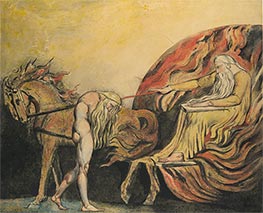
God Judging Adam c.1795
Paper Art Print
$58.49
$58.49
SKU: AKE-19137
William Blake
Original Size: 42.5 x 52.7 cm
Metropolitan Museum of Art, New York, USA
William Blake
Original Size: 42.5 x 52.7 cm
Metropolitan Museum of Art, New York, USA
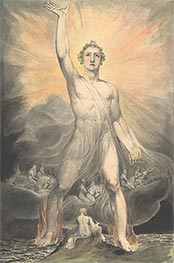
Angel of the Revelation c.1803/05
Paper Art Print
$52.13
$52.13
SKU: AKE-19138
William Blake
Original Size: 39.2 x 26 cm
Metropolitan Museum of Art, New York, USA
William Blake
Original Size: 39.2 x 26 cm
Metropolitan Museum of Art, New York, USA
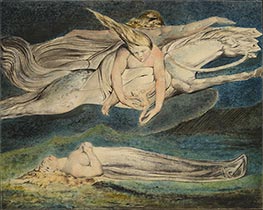
Pity c.1795
Paper Art Print
$58.08
$58.08
SKU: AKE-19139
William Blake
Original Size: 42.2 x 52.7 cm
Metropolitan Museum of Art, New York, USA
William Blake
Original Size: 42.2 x 52.7 cm
Metropolitan Museum of Art, New York, USA
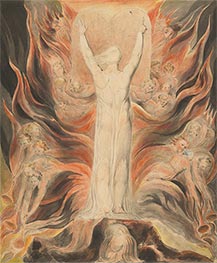
God Writing upon the Tables of the Covenant c.1805
Paper Art Print
$52.13
$52.13
SKU: AKE-19140
William Blake
Original Size: 41.9 x 34.2 cm
National Galleries of Scotland, Edinburgh, UK
William Blake
Original Size: 41.9 x 34.2 cm
National Galleries of Scotland, Edinburgh, UK
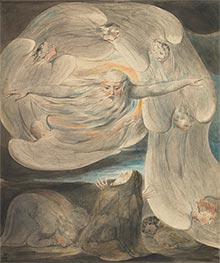
The Lord Answering Job from the Whirlwind c.1803/05
Paper Art Print
$52.13
$52.13
SKU: AKE-19141
William Blake
Original Size: 39.3 x 33 cm
National Galleries of Scotland, Edinburgh, UK
William Blake
Original Size: 39.3 x 33 cm
National Galleries of Scotland, Edinburgh, UK
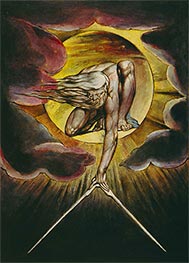
The Ancient of Days 1794
Paper Art Print
$52.13
$52.13
SKU: AKE-19142
William Blake
Original Size: 30.8 x 24.8 cm
Fitzwilliam Museum, Cambridge, UK
William Blake
Original Size: 30.8 x 24.8 cm
Fitzwilliam Museum, Cambridge, UK